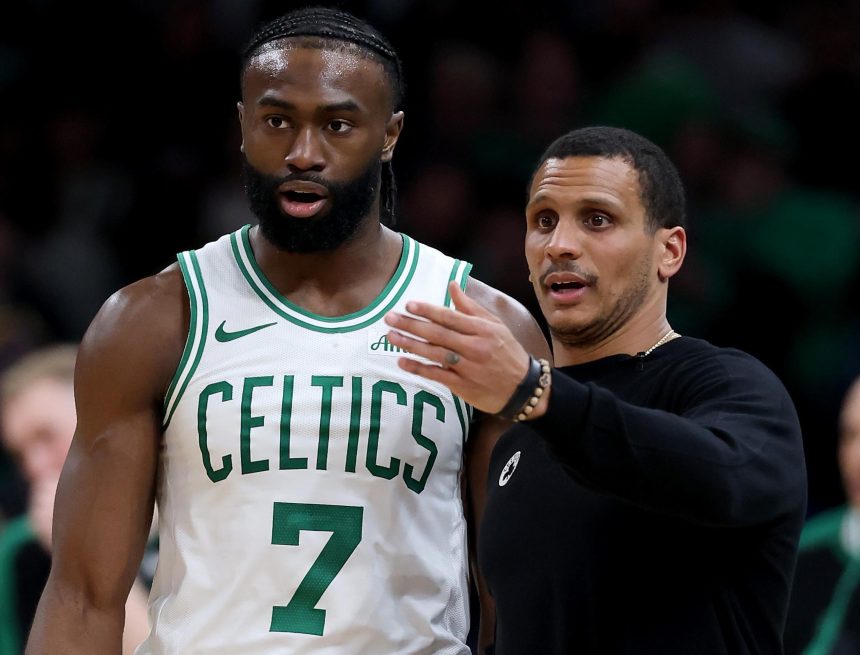Australian Prime Minister Anthony Albanese has arrived in the United States for a long-awaited meeting with US President Donald Trump, with the two leaders expected to discuss defence and trade ties amid the Washington-Beijing trade war.
In the wake of China tightening restrictions on its rare earths, the flow of Australian critical minerals into the US would be one of the major talking points during the summit on Monday.
The two leaders will also discuss the AUKUS pact – a trilateral security agreement between Australia, the US and the United Kingdom – that aims to counter China’s growing defence footprint in the Asia Pacific.
Here is what is on the agenda for the meeting between Trump and Albanese:
When and what time is the Trump-Albanese summit?
Albanese, who arrived in Washington, DC late on Sunday night (about 03:50 GMT on Monday), will meet Trump on Monday at the White House.
While there’s no official confirmation regarding the meeting time, Australian media have reported that it will take place in the White House at 15:00 GMT and will be televised.
The meeting on Monday marks the first bilateral summit between the two. They met briefly last month on the sidelines of the United Nations General Assembly meeting, and they have spoken over the phone four times.
Australian media have criticised Albanese for not scheduling the meeting earlier.
Despite recent differences between the US and Australia over issues such as trade and the recognition of the state of Palestine, Washington and Canberra have led a consistent relationship for the past decade, Charles Edel, senior adviser and Australia chair of the Center for Strategic and International Studies (CSIS) think tank, wrote in an analysis published by the CSIS website.
“We’ll work hard here to create benefits for Australians back home, from regional security to trade and investment,” Albanese wrote in an X post after he landed on Sunday night.
What is on the agenda?
Critical minerals
Australia and the US will potentially discuss increased cooperation on critical minerals during the meeting. Canberra is open to offering shares of its upcoming strategic reserve of critical minerals to allied countries, including the US.
This is happening as China, which holds a near-monopoly on rare earth metals, tightened restrictions on its exports on October 9.
The US is a major consumer of Chinese rare-earth metals, which are critical for its defence industry. The US sourced 70 percent of its rare-earth compounds and metals imports from China between 2020 and 2023, according to a US Geological Survey report.
“Albanese is meeting Trump at a time when US-China tensions are growing due to factors including tariff troubles and China’s curtailing of rare earth exports,” Rajeswari Rajagopalan, a resident senior fellow at Canberra-based think tank, the Australian Strategic Policy Institute, wrote in a piece published by the institute’s commentary and analysis website.
Australia has a reserve of 31 critical minerals. The country has Graphite, which is essential for batteries and electronics; Vanadium, used to make steel; Tungsten, used in electronics, industrial machinery and defence; and Zirconium, used in ceramics and nuclear reactors, among others.
Australia also has rare earth metals such as neodymium, praseodymium, dysprosium, and yttrium. Rare earths are part of critical minerals, but not all critical minerals are rare earths. Critical minerals cover a wide group essential for modern technology and security; rare earths are a specific family of elements critical for the manufacture of technology such as smartphones, electric vehicles and wind turbines.
Australia produces 33 percent of the world’s lithium while China produces 23 percent of it, according to the International Energy Agency. China refines 57 percent of the world’s lithium.
“We’ve got so much to offer the world when it comes to critical minerals and rare earths,” Australian Treasurer Jim Chalmers told a CNN interview, according to a transcript published by the Treasury on October 17.
“And so, we will work with our partners around the world, including here in the United States, to make sure that we maximise that opportunity for Australia.”
Monday is an opportunity for Albanese to pitch Australia as a reliable alternative source of rare earth metals to the US.
AUKUS and defence cooperation
The AUKUS security pact was announced by Trump’s predecessor Joe Biden in September 2021. Australia is expected to spend billions of dollars on the development of submarines over the next one and a half decades.
The deal is designed to strengthen security and maintain strategic stability in the Asia Pacific region. It was created largely in response to China’s increasing influence and competition in that area. AUKUS entails collaboration on defence technologies such as cyber-capabilities, artificial intelligence, quantum computing and underwater systems.
Under AUKUS, Australia seeks to leverage US and British technological expertise to acquire nuclear submarines.
Australia plans to acquire three used nuclear-powered submarines from the US, with the possibility of purchasing two additional submarines later.
The three countries plan to jointly design and build a new nuclear-powered submarine model for the UK and Australian navies.
The Trump administration is planning to review the AUKUS deal to make sure it fits into its America-first agenda, according to media reports.
In February, a reporter asked Trump about the defence pact during a presser in the Oval Office before his meeting with UK Prime Minister Keir Starmer. “What does that mean?” Trump responded. When the reporter explained what AUKUS is, Trump gestured at Starmer and said “we will be discussing that.”
Trump added: “We’ve had another great relationship, and you have, too, with Australia. We’ve had a very good relationship with Australia.”
Another security forum, Quad, of which Australia is a member along with the US, Japan and India, has also not received much attention by the Trump administration.
Canberra is hopeful that the Albanese-Trump meeting will lead to AUKUS being rubber-stamped. Australia has already committed $1bn to support US manufacturing, with another $1bn expected to be paid by the end of the year.
“In the context of AUKUS and the ongoing review, several issues might be raised in the meeting,” Edel said.
“These include Australia’s financial commitment to the deal in the context of broader defence expenditures, Canberra’s recent and upcoming payments to boost US submarine production capacity, and funding and progress on the buildout of the Submarine Rotational Forces-West facility in Perth.”
Australia is also a member of the Five Eyes intelligence partnership with the US, UK, Canada and New Zealand, where the members of the alliance share intelligence for security cooperation.
Trump has called on US allies to increase their defence spending, up to 3.5 percent of their gross domestic product (GDP). Australia’s defence budget currently comprises 2 percent of its GDP, which was $1.75 trillion in 2024, according to the World Bank.
Australia believes its overall contributions, including building military infrastructure, co-producing weapons and hosting US bases, go beyond simple spending figures.
Additionally, Albanese disputes using GDP percentage as the main measure.
Despite recent efforts to boost the defence spending case, it’s unclear if Australia will meet Trump’s expectations.
Trade and tariffs
The US had a trade surplus worth $17.9bn more than Australia last year, according to the office of the US trade representative.
Australia is among the trading partners which face the lowest tariffs from the US. Its exports to the US face a baseline 10 percent tariff, besides 50 percent tariffs on steel and aluminium.
When Trump imposed the 10 percent tariff on April 1, Albanese responded: “The Administration’s tariffs have no basis in logic – and they go against the basis of our two nations’ partnership.”
During the meeting, Albanese is likely to advocate for tariff relief.
Australia has deepened trade ties with China under the Albanese government, which won a second term in May. China is Australia’s largest trading partner, and exports of iron ore and coal have been fundamental to Australia’s national budget.
In 2023, Australia exported goods worth $143bn to China, according to the Observatory for Economic Complexity (OEC). In the same year, Australia exported goods worth $13.5bn to the US.
“Australia values our relationship with China and will continue to approach it in a calm and consistent manner, guided by our national interest,” Albanese said during his trip to Beijing in July.
On his part, Chinese President Xi Jinping said Beijing was willing to push forward China-Australia relations.
But Canberra has been under pressure from the US to counter China’s growing military presence in the region.
Australia’s close security and other partnerships with the West have caused tensions with China. After Australia supported an independent investigation of the COVID-19 pandemic, China imposed multiple tariffs on Australia.
In November 2020, China imposed tariffs, at some points exceeding 200 percent, on Australian wine in retaliation for Australia’s “pro-West” policies. Other Australian exports such as barley, cotton, timber and coal also faced tariffs. By 2024, most of these tariffs were removed.
Regardless, Albanese is seeking to diversify his country’s export markets.


